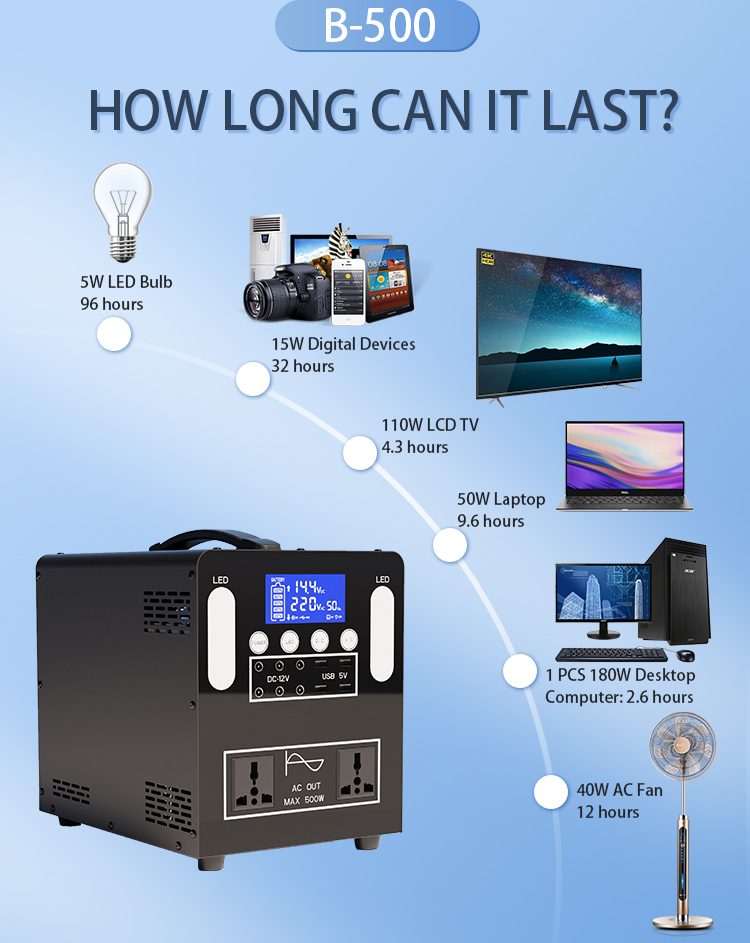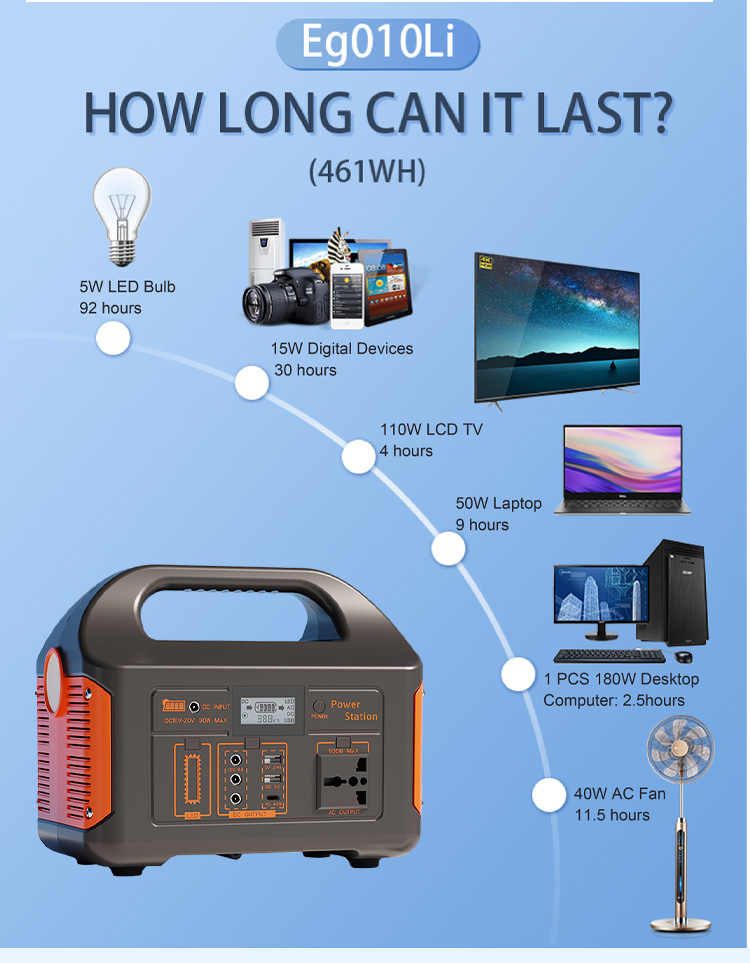Advantages of lead-acid battery portable power station
Low cost: The production cost of lead-acid batteries is relatively low, so the price of lead-acid battery portable power station is more affordable, and the initial investment is small, which is an important consideration for consumers with limited budgets.
High safety: The chemical properties of lead-acid batteries are relatively stable, and there are almost no safety accidents such as combustion or explosion during use. It has high safety and is suitable for use in various environments.
Good low temperature resistance: In low temperature environment, the performance of lead-acid batteries is relatively stable and can release a certain amount of electrical energy. For example, at minus 30℃, lead-acid batteries can still release nearly half of their electrical energy, which makes it have certain advantages in cold areas or low temperature environments.
Strong high current discharge capability: Lead-acid batteries can withstand large discharge currents, usually within 5C, and are suitable for powering some devices with high instantaneous current requirements, such as car starting.
Perfect recycling system: The recycling system of lead-acid batteries is relatively mature, 95% of the batteries are recyclable, and have inherent end-of-life value, with relatively small impact on the environment.
Advantages of lithium battery portable power station
High energy density: The energy density of lithium batteries is usually 3-4 times that of lead-acid batteries, and more electrical energy can be stored in a smaller volume and weight, making lithium battery portable power stations lighter and easier to carry, suitable for outdoor travel, camping and other scenes with high portability requirements.
Long cycle life: The cycle life of lithium batteries can reach more than 1,000 times, much higher than the 300-500 times of lead-acid batteries. This means that lithium battery portable power stations can maintain good performance in long-term use, reducing the frequency and cost of battery replacement.
Low self-discharge rate: The self-discharge rate of lithium batteries is very low. Even if they are not used for a long time, the power will not be lost too much. They are suitable as backup power or in intermittent use scenarios, and can provide power support for devices at any time.
Fast charging speed: Lithium batteries support fast charging technology. The fast charging function can replenish a large amount of power for the power station in a short time, which improves the convenience of use. For example, some lithium battery portable power stations use the fast charging function to charge from 0-80% in just 1.5-2 hours.
Stable output voltage: Lithium batteries can maintain a relatively stable output voltage during the discharge process, providing stable power support for various electronic devices, reducing damage to the equipment caused by voltage fluctuations, and extending the service life of the equipment.
Good compatibility: Lithium battery portable power stations are usually equipped with multiple interfaces, such as Type-C, USB-A, etc., support multiple fast charging protocols, can meet the charging needs of different devices, and have stronger compatibility.

